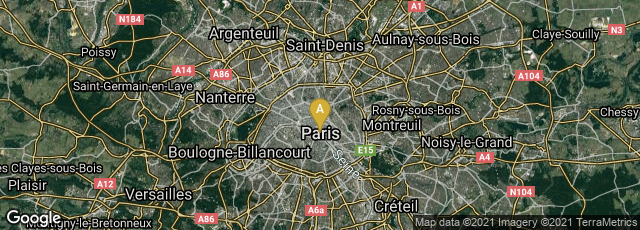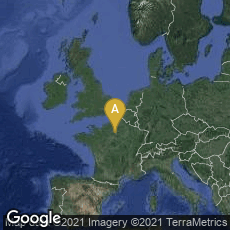

A: Paris, Île-de-France, France
Mathematician and philosopher Blaise Pascal invented an adding machine, the Pascaline.
"Use. The dials show the French monetary unit, the livre, which was divided into 12 deniers, each subdivided into 20 sols. The essential part of the machine was its decimal carry; each toothed wheel moved forward one unit (one-tenth of a revolution on each wheel except those of deniers and sols) when the previous wheel had completed one revolution. Subtraction was based on complementary numbers that could be revealed by moving the strip at the top of the calculator" (Gordon Bell's website, accessed 10-12-2011).
In 1645 Pascal published an eighteen-page pamphlet describing his calculating machine. It was called Lettre dédicatoire à Monseigneur le Chancelier sur le sujet de la machine nouvellement inventée par le Sieur B. P. pour faire toutes sortes d’opérations d’arithmétique, par un mouvement reglé, sans plume ny jettons avec un advis necessaire à ceux qui auront curiosité de voir ladite machine. . . . The pamphlet does not identify a place of printing or a printer’s name, so we may assume that Pascal paid for its printing. When we published Origins of Cyberspace OCLC cited only two copies of this pamphlet in one French library and no copies in North America.
Pascal's pamphlet was reprinted along with additional material related to the Pascaline in his Oeuvres (1779), vol. 4, 7-30. The additional material consisted of Pascal's 1650 letter describing the machine that he presented to Queen Christina of Sweden; the privilege for its construction and sale issued in 1649, and Denis Diderot's description of the machine published in the Encyclopédie.
Hook & Norman, Origins of Cyberspace (2002) no. 13.